Pork hock vs ham hock are both cuts of meat that come from the leg of a pig. While they may seem similar, they have some notable differences. The main difference between pork and ham hocks is that pork hocks come from the pig’s front leg, while ham hocks come from the back leg.
As a result, pork hocks tend to be meatier and have a slightly different flavour than ham hocks. People often use pork hocks in traditional German cuisine, where they slow-cook and serve them with sauerkraut and potatoes.
Conversely, people commonly use ham hocks to flavour soups, stews, and beans. Many cultures popularize both cuts, and individuals can prepare them in various ways. Whether you prefer pork hock or ham hock, both can be a tasty addition to your cooking repertoire.
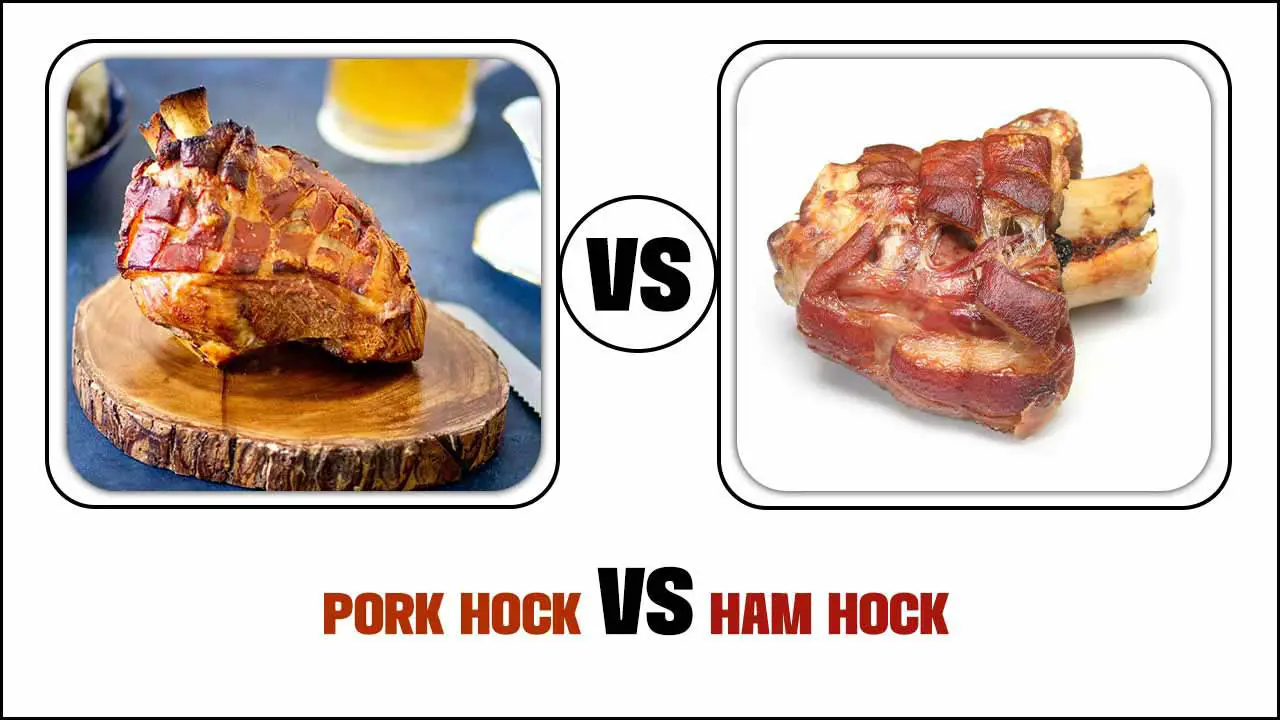
Definition Of Pork Hock And Ham Hock

Pork hock and ham hock are both cuts of meat from the leg of a pig. The hock is the lower portion of the pig’s leg, just above the ankle. Many cultures popularize both cuts, and individuals can prepare them in various ways.
Pork hock is a tough, flavorful cut of meat that is often handy in stews, soups, and braised dishes. During slow cooking, the connective tissue and collagen can break down to create a rich, gelatinous broth. The meat is lean and can be quite dry when overcooked, so it’s important to cook it slowly and carefully to achieve the best results.
Ham hock is a meatier cut that people often cure and smoke to create ham, on the other hand. It has a slightly sweeter flavour than pork hock and is also quite versatile, used in various dishes such as soups, stews, and casseroles. Ham hock can also be roasted or grilled to create a crispy outer layer that is delicious to eat.
Flavour Profile Of Pork Hock And Ham Hock
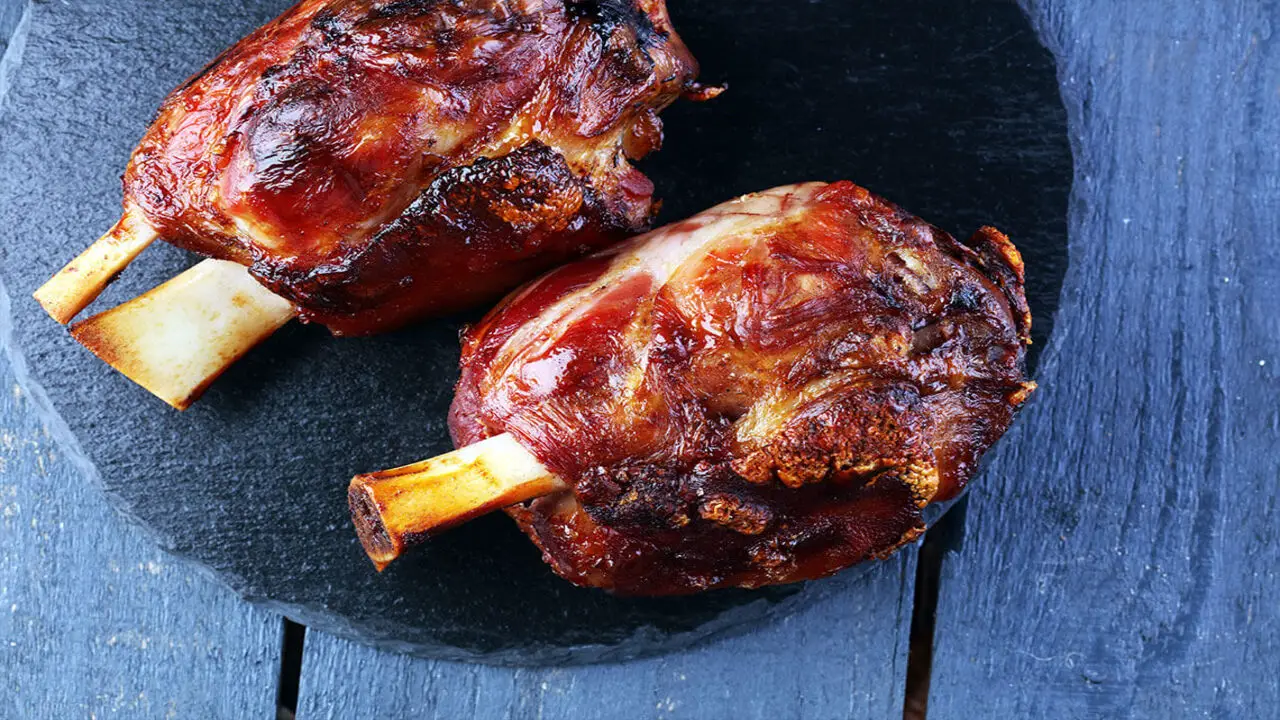
Pork hock and ham hock are flavorful pork cuts that come from the lower leg of the pig. People often use them in stews, soups, and braises, and they can roast or grill them. Pork hock is typically more meaty and less fatty than ham hock. It has a strong, savoury flavour often described as rich and slightly sweet. The meat is tender and juicy, with a slightly chewy texture that makes it ideal for slow cooking.
On the other hand, Ham hock is fattier and has a stronger, smokier flavour. It often adds flavour and richness to dishes and pairs well with beans, greens, and other hearty ingredients. The meat is tender and falls off the bone easily when cooked low and slow.
Both pork and ham hock are delicious and versatile cuts of meat that can add flavour to your favourite dishes. Whether you prefer a richer, smokier flavour or a meatier, slightly sweet taste, there’s a hock out there for you!
Pork Hock Vs Ham Hock – Texture And Flavor Showdown
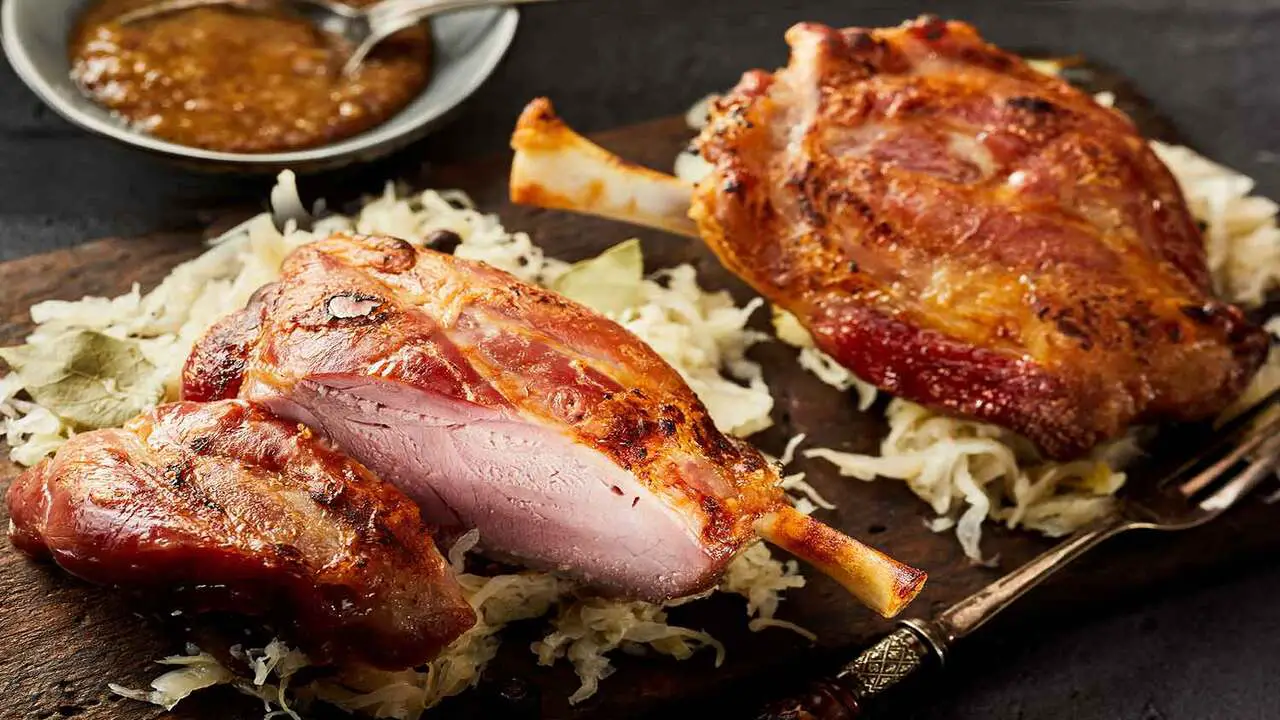
Pork hock and ham hock are both cuts of meat that come from the leg of a pig. While they are similar in many ways, they have some important differences. Ham hock, as the name suggests, comes from the ham area of the pig’s leg.
People usually cure and smoke it, giving it a distinct flavour and making it a popular ingredient in soups, stews, and other dishes. Ham hock is also often handy to flavour beans and lentils, adding a rich, meaty flavour.
On the other hand, pork hock is an uncured and unsmoked cut of meat that is usually sold fresh. It is often used in German and Eastern European cuisine, where it is cooked slowly and served with sauerkraut or other vegetables. Pork hock is also hendy to make stocks and broths, as it contains a lot of collagen, which gives the liquid a rich, velvety texture. Here are explained pork hock vs ham hock.
The Texture Of Pork Hock And Ham Hock
Both pork and ham hock have a delightful texture that sets them apart from other cuts. Pork hock, being the raw form, has a firm and dense texture. Its collagen content contributes to its rich, gelatinous mouthfeel when cooked low and slow. On the other hand, ham hock, having undergone curing and smoking, possesses a tender and slightly chewy texture.
The curing process enhances the flavor and adds a subtle saltiness, making it a popular choice for flavoring dishes like soups, stews, and beans. Both cuts offer a satisfying eating experience, with pork hock lending itself well to slow-cooked dishes and ham hock providing a ready-to-use option for quick and tasty meals.
Preparation Methods For Pork Hock And Ham Hock
Due to their distinct states, pork and ham hock call for different preparation approaches. Pork hock, being raw, requires thorough cooking to become tender and flavorsome. People commonly braise, simmer, or roast it for extended periods to break down the tough connective tissues and render the meat tender and juicy.
Pork hock’s versatility allows it to absorb various flavors, making it suitable for various recipes across different cuisines. In contrast, ham hock is already cured and smoked, ready for use in cooking with little to no additional preparation required. It is an excellent flavor enhancer in soups, beans, and greens, infusing them with its distinctive smoky and savory essence.
Nutritional Value Of Pork Hock And Ham Hock
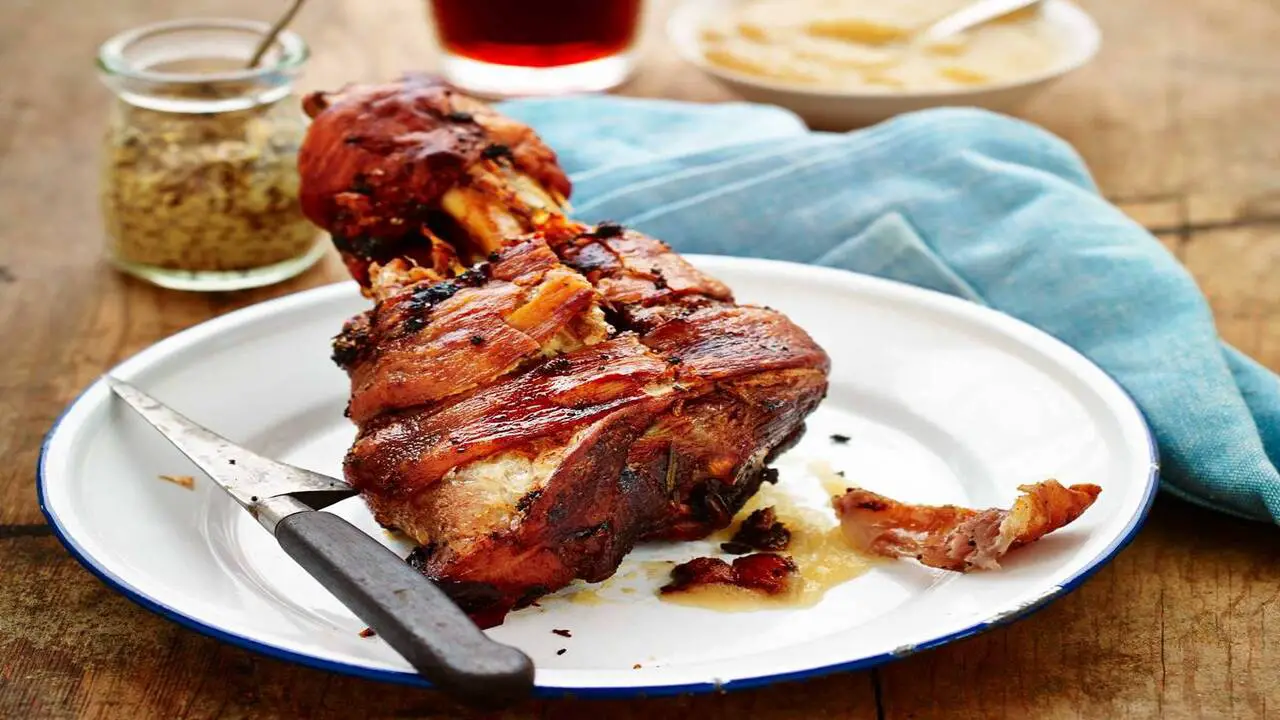
Pork and ham hock offer significant nutritional value, particularly in protein and collagen content. Both cuts are excellent high-quality protein sources, essential for building and repairing tissues. They also provide valuable minerals such as iron, zinc, and selenium, contributing to overall health.
Pork hock, being the raw form, may contain slightly more nutrients due to its unprocessed nature. However, ham hock retains its nutritional benefits despite the curing and smoking process. As with any meat, it is essential to consume them in moderation and balance them with a varied diet to obtain a wide range of nutrients necessary for a healthy lifestyle.
Culinary Uses Of Pork Hock And Ham Hock
Pork and ham hock serve diverse culinary purposes, catering to different cooking preferences. Its robust flavor and texture make pork hock ideal for slow-cooked dishes like German Eisbein or Filipino pata. Its ability to absorb flavors makes it versatile for various seasonings and marinades.
On the other hand, ham hock is widely utilized as a flavouring agent in dishes, adding depth and complexity to soups, stews, and beans. Its smoked essence infuses the ingredients, creating a delectable and savory taste. Ham hock’s convenience makes it a popular choice for home cooks and chefs looking to effortlessly enhance the taste of their recipes.
Availability Of Pork Hock And Ham Hock
The availability of pork and ham hock may vary depending on the region and the local culinary preferences. Both cuts are generally found in grocery stores, butcher shops, and specialty meat markets. However, ham hock tends to be more widely available due to its popularity and convenience in cooking.
Pre-packaged and ready-to-use forms commonly contain them. Pork hock, being the raw, unprocessed cut, may require more effort to source. Still, it is worth seeking out for its versatility and ability to shine in slow-cooked dishes that deliver exceptional flavors and textures.
Cost Comparison Of Pork Hock And Ham Hock
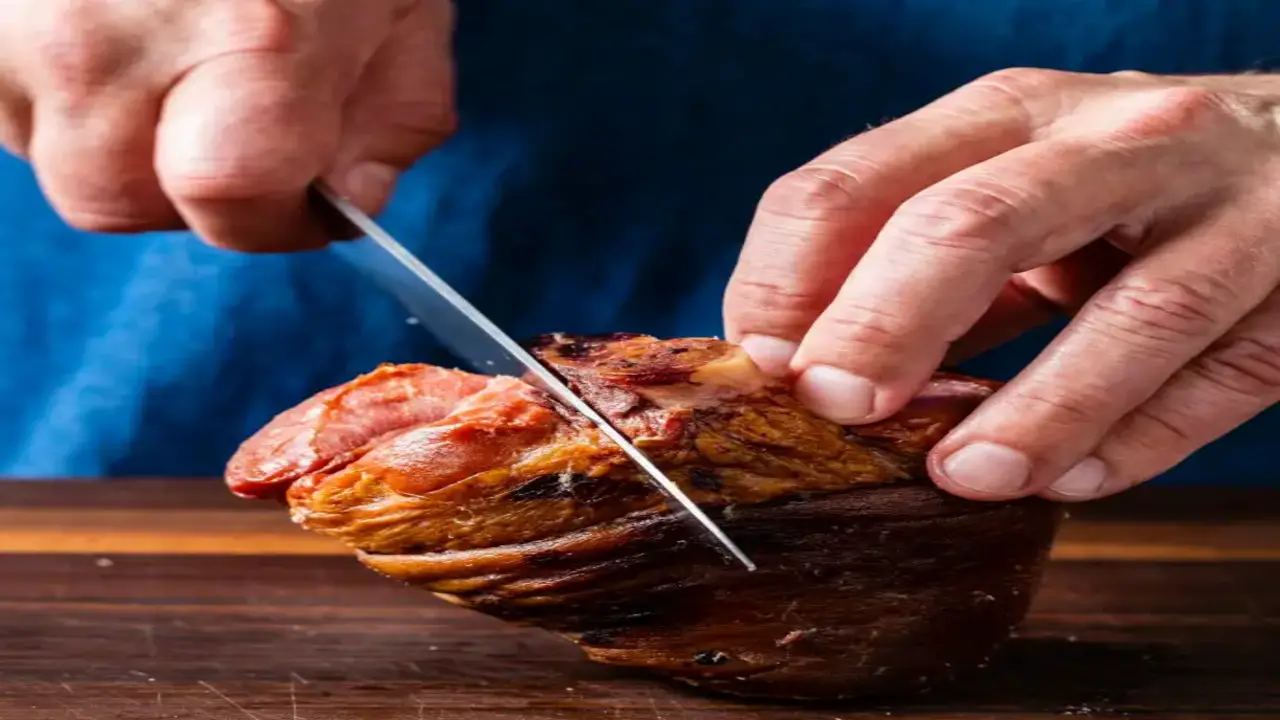
Regarding cost, pork hock is typically more budget-friendly than ham hock. Since pork hock is the raw, unprocessed cut of meat, it undergoes fewer preparation steps, reflecting its lower price tag. On the other hand, ham hock’s additional curing and smoking process contributes to its slightly higher cost.
However, both cuts remain affordable compared to other premium cuts of meat. Home cooks and chefs looking to maximize their budget without compromising taste can opt for either pork hock or ham hock, depending on their culinary needs and preferences.
Differences In Curing And Smoking
One of the key distinctions between pork hock and ham hock lies in the curing and smoking process. Pork hock is the unprocessed, raw cut, while ham hock has been subjected to curing and smoking techniques. Curing involves treating the ham hock with salt, sugar, and sometimes additional seasonings to enhance flavour, texture, and preservation.
After curing, the ham hock is traditionally smoked, infusing it with a distinctive smoky aroma and taste. This process also contributes to the ham hock’s characteristic pinkish hue. In contrast, pork hock retains its natural colour and requires cooking to achieve the desired flavours and textures.
Regional Variations In Pork Hock And Ham Hock:
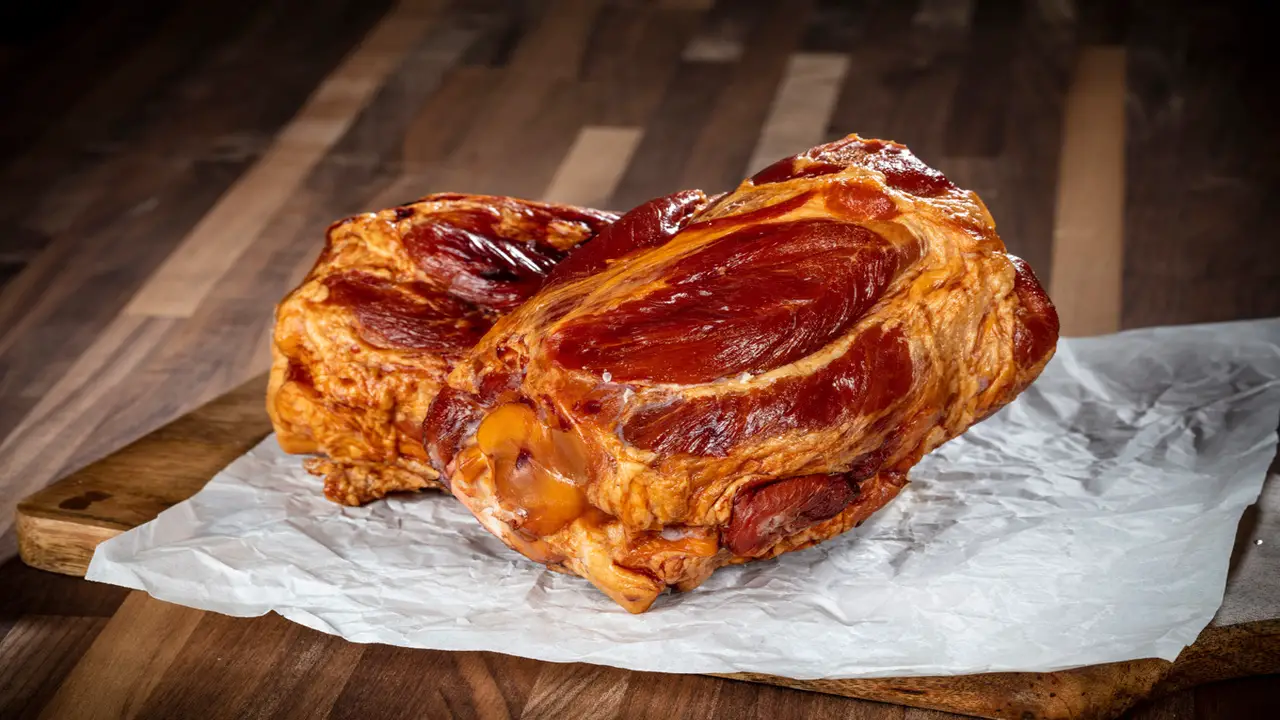
Pork and ham hock enjoy popularity in various culinary traditions worldwide, resulting in regional variations in their preparation and usage. In German cuisine, pork hock (Eisbein) is a beloved dish, usually braised or roasted to perfection and served with sauerkraut and mustard.
In Filipino cooking, pork hock (pata) is commonly used in rich stews like “Paksiw na Pata” or deep-fried to make “Crispy Pata.” Similarly, ham hock is prevalent in Southern U.S. cuisine, where iconic dishes like collard greens and black-eyed peas are flavoured. These regional variations showcase the versatility of both cuts and their ability to adapt to diverse culinary traditions while remaining a delightful addition to any meal.
Conclusion
The debate between pork hock vs ham hock ultimately comes down to personal preference and intended use. While both cuts of meat come from the same area of the pig, they differ in their saltiness and fat content. Pork hock tends to be less salty and more tender, making it a great option for slow-cooking dishes such as soups and stews.
On the other hand, ham hock is saltier and has a higher fat content, making it a popular choice for adding flavour to beans and other hearty dishes. Ultimately, the success of a dish utilizing either pork hock or ham hock will depend on the specificity of the recipe and the intended flavour profile. Whether you choose pork hock or ham hock, both cuts of meat have the potential to add depth and richness to your meals.
FAQs
1.How Can I Store Fresh Herbs To Keep Them Fresh Longer?
Ans: To keep fresh herbs fresh for longer, store them like a bouquet in a jar with water, cover the leaves loosely with a plastic bag, and refrigerate. Change the water every few days, and they should last up to two weeks.
2.What’s The Difference Between Baking Powder And Baking Soda?
Ans: Baking powder and baking soda are leavening agents used in baking, but they work differently. Baking soda needs an acid (e.g., buttermilk, yoghurt) to create carbon dioxide and raise the batter.
3.Can I Freeze Leftover Soup?
Ans: Yes, you can freeze leftover soup. Allow the soup to cool completely before transferring it to an airtight container or freezer bag. Label the container with the date; it should stay fresh for 2-3 months in the freezer.
4.How Do I Know When An Avocado Is Ripe?
Ans: To check if an avocado is ripe, gently press it near the stem. If it gives slightly and feels soft but not mushy, it’s ripe and ready to eat. If it’s firm, it needs more time to ripen; if it’s very soft or mushy, it’s likely overripe.
5.What Are Some Common Substitutes For Butter In Baking?
Ans: Some common butter substitutes in baking are applesauce, mashed bananas, yogurt, vegetable oil, or coconut oil. Each substitution can slightly alter the taste and texture of the final product, so choose the one that best suits your recipe and dietary preferences.
